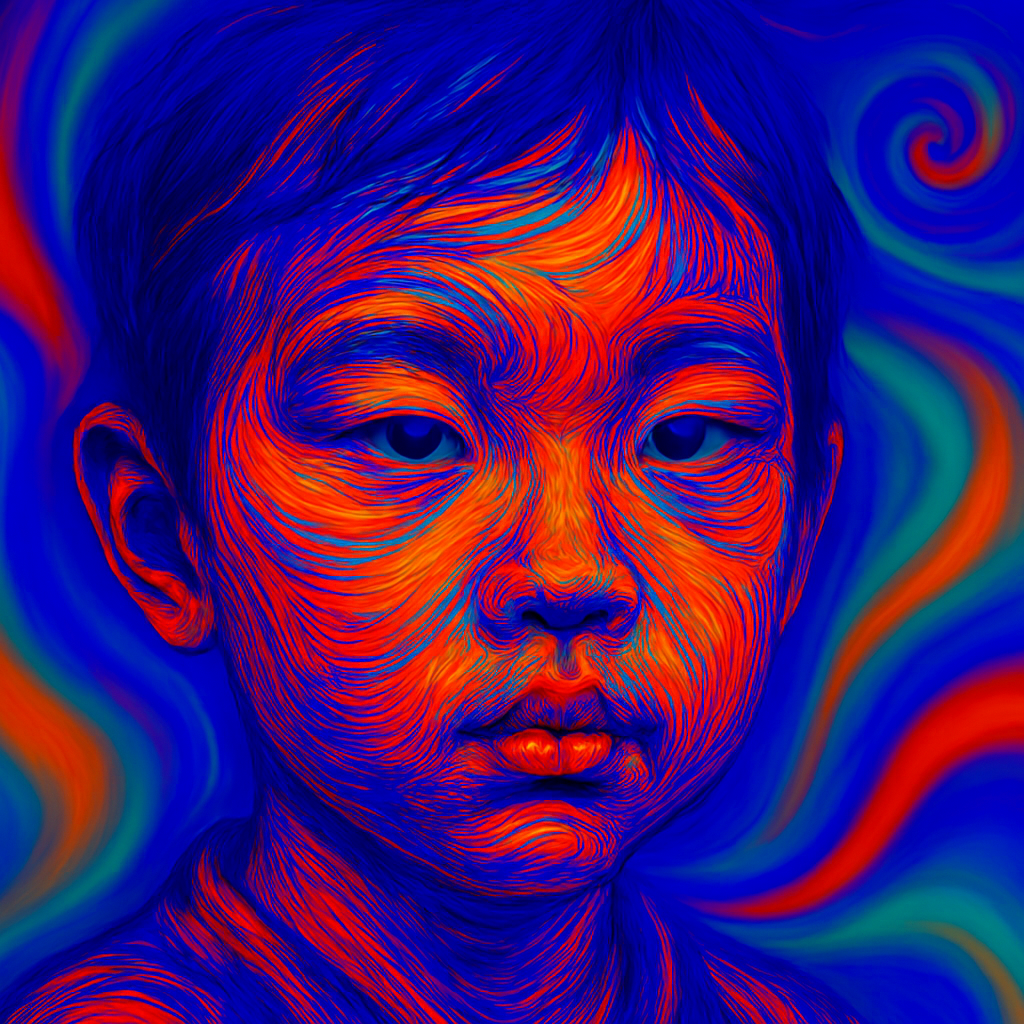
Dynamic Environmental Psychology Resilience Caring Design
Caring Design
How Environments Shape Human Psychology Resilience
Why Ecological Awareness Begins Within Environmental Psychology Resilience
Human psychology is not isolated from the environment—it is shaped by it. From the earliest cave dwellings to modern urban sprawl, the spaces we inhabit influence how we think, feel, and behave. Environmental psychology studies this dynamic relationship, revealing how natural and built environments affect cognition, emotion, and social interaction. The field draws from neuroscience, ecology, anthropology, and architecture to understand how surroundings impact mental health and decision-making. Green spaces reduce stress – noise pollution increases anxiety – and spatial design alters memory and attention. These effects are not incidental – they are foundational to how humans adapt and evolve. As climate change intensifies and urbanization accelerates, understanding the psychological dimensions of environment becomes urgent.

Biophilia and the Human Need for Nature
Biophilia is a term that is becoming more common and it is the human tendency to seek a connection with nature. Coined by biologist E.O. Wilson, the term reflects evolutionary patterns—humans evolved in natural settings, not artificial ones. Exposure to greenery improves mood – lowers cortisol – and enhances cognitive performance. Hospital patients recover faster when they can see trees – children learn better in classrooms with natural light. These effects are measurable and repeatable across cultures and age groups.
Biophilic design integrates nature into architecture – using plants, water features, and organic materials to support mental health. The absence of nature—termed “nature deficit”—correlates with increased anxiety and depression. Urban environments that lack green space often show higher rates of psychological distress. Biophilia is not a luxury – it is a biological necessity. Reconnecting with nature is a form of psychological repair.
Environmental Memory and Place Attachment
Humans form emotional bonds with places – a phenomenon known as place attachment. These bonds are shaped by memory, identity, and cultural meaning. Childhood environments often leave lasting psychological imprints – influencing preferences and values in adulthood. Environmental memory is stored in the brain’s hippocampus – the same region responsible for spatial navigation and episodic recall.
Familiar places evoke comfort – unfamiliar ones can trigger stress or disorientation. Place attachment supports resilience during crises – people often return to damaged homes after natural disasters. Cultural rituals and storytelling reinforce these bonds – turning landscapes into symbols of belonging. Displacement—whether due to war, gentrification, or climate migration—can cause psychological trauma. Healing often involves re-establishing environmental continuity. Place is not just physical – it is emotional and symbolic.
Noise Pollution and Cognitive Fatigue
Noise pollution is a chronic stressor that affects attention, memory, and emotional regulation. Traffic, construction, and industrial sounds activate the brain’s stress response – increasing cortisol and reducing focus. Children exposed to high noise levels show delayed reading skills and impaired executive function. Adults experience sleep disturbances – irritability – and reduced productivity.
The World Health Organization classifies noise pollution as a major environmental health risk. Quiet environments support cognitive restoration – allowing the brain to recover from overstimulation. Natural sounds—like birdsong or flowing water—have calming effects on the nervous system. Acoustic design in buildings can mitigate noise impacts – using insulation, layout, and materials to reduce sound transmission. Chronic noise exposure is linked to cardiovascular disease and mental health disorders. Silence is not emptiness – it is psychological nourishment.

Climate Anxiety and Ecological Grief
Climate change is not only a physical crisis – it is a psychological one. Climate anxiety refers to chronic fear and distress about environmental collapse. Ecological grief arises from the loss of ecosystems, species, and landscapes. These emotions are valid responses to real threats – not irrational fears. Young people report high levels of climate-related distress – often linked to feelings of helplessness and betrayal.
Indigenous communities experience ecological grief as cultural loss – tied to ancestral lands and traditions. Therapists now recognize climate anxiety as a legitimate mental health concern. Coping strategies include activism – community engagement – and ecological restoration. Avoidance and denial often worsen psychological symptoms.
Built Environments and Behavioral Design
Architecture influences behavior – often in invisible ways. Narrow hallways increase aggression – open layouts foster collaboration. Lighting affects mood – color impacts perception and decision-making. Behavioral design uses environmental cues to guide human action – from signage to spatial flow. Prisons, schools, and hospitals are shaped by psychological assumptions – often without explicit awareness. Poor design can exacerbate mental health issues – while thoughtful design can support recovery and learning. Accessibility and inclusivity are essential for psychological safety. Design justice advocates for environments that reflect diverse needs and identities. Built environments are not neutral – they encode values and power dynamics. Every wall, window, and walkway tells a psychological story.
Environmental Symbolism and Cultural Archetypes
Landscapes carry symbolic meaning – shaped by myth, ritual, and collective memory. Mountains represent transcendence – forests evoke mystery – deserts symbolize solitude. These archetypes appear in literature, religion, and art across cultures. Environmental symbolism influences emotional response and narrative framing. Sacred sites often align with natural features – reinforcing spiritual connection. Urban environments also carry symbolic weight – skyscrapers suggest ambition – ruins evoke decay. Environmental psychology studies how these symbols affect perception and behavior. Cultural narratives shape environmental attitudes – influencing conservation and development. Symbolic landscapes can heal or harm – depending on context and interpretation. The environment is not just seen – it is read.

Sensory Ecology and Multimodal Perception
Human perception is multisensory – integrating sight, sound, smell, touch, and temperature. Sensory ecology examines how environments stimulate these senses – and how that affects cognition. Natural environments offer rich sensory input – promoting neural plasticity and emotional regulation. Artificial environments often lack sensory diversity – leading to overstimulation or sensory deprivation. Smell influences memory – sound affects emotion – texture shapes comfort. Sensory design can support neurodivergent individuals – by reducing triggers and enhancing accessibility. Sensory overload is common in urban settings – contributing to fatigue and irritability. Nature offers sensory balance – through rhythmic patterns and organic variation. Sensory ecology is foundational to environmental psychology. The body is a sensor – and the environment is its interface.
Environmental Justice and Psychological Equity
Marginalized communities often face higher exposure to pollution – lower access to green space – and greater climate vulnerability. These disparities affect mental health – contributing to stress, trauma, and reduced well-being. Psychological equity means ensuring all people have access to environments that support mental health. Environmental racism is a documented phenomenon – with historical roots in zoning and policy. Community-led design and restoration projects can repair psychological harm. Environmental justice is not just legal or political – it is emotional and cognitive. Healing requires acknowledging past harms – and co-creating inclusive futures. Equity is environmental – and psychological.
Urban Nature and Microrestoration
Urban nature refers to small-scale natural elements in cities – like pocket parks, green roofs, and street trees. These features offer microrestoration – brief moments of psychological recovery. Even short exposure to greenery improves mood and attention. Urban nature supports biodiversity – reduces heat – and enhances social cohesion. Designing for microrestoration involves integrating nature into everyday routines. Bus stops with plants – sidewalks with shade – and buildings with gardens all contribute. Urban nature is cost-effective and scalable – making it a key strategy for mental health. Cities are not inherently stressful – they can be designed for psychological resilience. Microrestoration is a powerful tool for environmental psychology. Small green spaces have big impacts.
Environmental Identity and Self-Concept
Environmental identity refers to how individuals see themselves in relation to nature. This identity influences behavior – values – and emotional response to environmental issues. People with strong environmental identities are more likely to engage in conservation and activism. Environmental identity is shaped by upbringing – culture – and personal experience. It can be strengthened through education – storytelling – and immersive nature experiences. Loss of environmental identity can lead to disconnection and apathy. Rebuilding this identity supports psychological resilience and ecological engagement. Environmental identity is not fixed – it evolves with context and reflection. It is a bridge between self and world.

Nature as a Therapeutic Modality
Nature therapy uses outdoor environments to support mental health. Techniques include forest bathing – horticultural therapy – and wilderness retreats. These approaches are evidence-based – showing reductions in anxiety, depression, and PTSD symptoms. Nature therapy activates the parasympathetic nervous system – promoting relaxation and healing. It also fosters mindfulness and embodied awareness. Therapists increasingly incorporate nature into practice – through walk-and-talk sessions and eco-psychology frameworks. Nature is not a passive backdrop – it is an active participant in healing. Therapeutic landscapes are designed to support emotional processing and recovery. Nature therapy is accessible and adaptable. The Earth is a co-therapist.
Environmental Cognition and Spatial Intelligence
Environmental cognition refers to how people perceive, understand, and navigate spaces. It involves spatial memory – orientation – and mental mapping. Built environments can support or hinder these processes. Wayfinding design uses signs, landmarks, and layout to guide movement. Poor environmental cognition leads to confusion – stress – and reduced autonomy. Spatial intelligence varies across individuals – and can be trained through experience. Environmental cognition is essential for safety, accessibility, and independence. It also influences creativity and problem-solving. Designing for environmental cognition supports psychological well-being. The mind maps the world – and the world maps the mind.
Seasonal Rhythms and Circadian Psychology
Human biology is synchronized with environmental cycles – especially light and temperature. Circadian rhythms regulate sleep, mood, and hormonal balance. Disruption of these rhythms—through artificial lighting or shift work—can lead to insomnia, depression, and metabolic disorders. Seasonal affective disorder (SAD) is a well-documented condition linked to reduced daylight in winter months. Natural light exposure supports serotonin production – improving mood and focus. Environments that mimic natural cycles—through dynamic lighting and temperature control—enhance psychological health. Seasonal rhythms also influence cultural rituals and emotional states. Environmental psychology recognizes time as a spatial and biological dimension. Healing involves re-aligning with natural cycles. The body is a clock – and the environment is its pendulum.
Environmental Microbiomes and Mental Health
The environment is alive with microbial life – and these microbes influence human health. Soil bacteria like Mycobacterium vaccae have been shown to boost serotonin and reduce anxiety. Exposure to diverse microbiomes—through gardening, forest walks, or animal interaction—supports immune function and emotional regulation. Sterile environments may contribute to autoimmune disorders and mood imbalances. The gut-brain axis links microbial diversity to mental health – and the environment is a key source of microbial input. Urbanization often reduces microbial exposure – leading to what some researchers call “biological loneliness.” Environmental psychology now includes microbial ecology as part of its framework. Mental health is not just psychological – it is microbial. The Earth’s biodiversity is mirrored in the human microbiome.
Environmental Design for Neurodiversity
Neurodivergent individuals—such as those with autism, ADHD, or sensory processing differences—experience environments differently. Bright lights, loud sounds, and chaotic layouts can be overwhelming. Inclusive design considers sensory needs – offering quiet zones, visual clarity, and predictable patterns. Environmental psychology supports universal design principles – ensuring accessibility and comfort for all cognitive profiles. Nature-based environments often support neurodivergent well-being – through sensory balance and reduced social pressure. Schools, workplaces, and public spaces can be adapted to support neurodiversity. Design is a form of empathy – and environmental psychology is its guide. Neurodiversity is not a deficit – it is a different way of experiencing the world. The environment must meet every mind where it is.

Ecopsychology and the Collective Unconscious
Ecopsychology explores the deep psychological connection between humans and the Earth. It draws from Jungian theory – suggesting that nature is part of the collective unconscious. Environmental degradation reflects psychological fragmentation – and healing the planet involves healing the psyche. Ecopsychologists use nature as a mirror for emotional insight – seeing rivers as flow, mountains as stability, and storms as transformation. This symbolic approach complements empirical research – offering depth and meaning. Ecopsychology also critiques consumer culture – arguing that disconnection from nature fuels alienation and anxiety. Ritual, myth, and storytelling are tools for ecological healing. The Earth is not just a resource – it is a psychological archetype. Ecopsychology invites us to listen to the soul of the world.
Conclusion
The psychology of the environment is not a niche concern—it is central to human well-being. From sensory ecology to climate grief, each facet reveals how deeply intertwined our minds are with the spaces we inhabit. Environmental psychology offers tools for healing, design, and transformation—grounded in fact and enriched by symbolic depth. As we face ecological crises and urban challenges, understanding these dynamics becomes essential. The environment is not passive—it is a co-creator of experience. By aligning design, policy, and personal practice with psychological insight, we can build environments that support resilience, inclusivity, and emotional intelligence. The Earth is not separate from us—it is a reflection of us. Healing the environment is healing ourselves.
Join the Discussion
How has your environment shaped your emotional life or creative process? What spaces make you feel most alive—and why?
#EnvironmentalPsychology #EcologicalHealing #Biophilia #ClimateAnxiety #PlaceAttachment #SensoryEcology #NeurodiversityDesign #EnvironmentalJustice #NatureTherapy #SymbolicLandscapes #UrbanNature #MicrobiomeMind #Ecopsychology #SpatialIntelligence #SeasonalRhythms



I am not sure the place you are getting your info, but great topic. I needs to spend some time studying more or working out more. Thanks for wonderful information I was in search of this information for my mission.